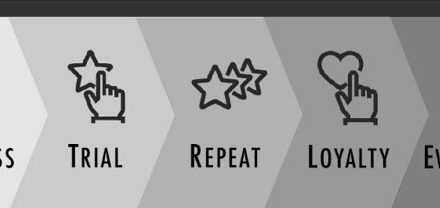Impressive sales figures from the 2012 holiday season show that consumers are spending more than ever online. According to comScore Inc., U.S. consumers spent more than $42 billion in the months of November and December alone—a 13.7% increase over the 2011 season. So what does this mean to retail business owners with e-commerce sites?
In order to get a piece of this multi-billion-dollar pie, online retailers must ensure their products have descriptions that ultimately sell the product. A quality photo along with a sales-oriented description is key to driving consumers to buy. When there is an informative and engaging description, retail owners spend less time answering consumer questions and more time running their business and earning a profit.
Even if business owners don’t sell products online, they still need quality descriptions. Whether they realize it or not, retailers are constantly promoting their products through print catalogs, flyers, social media sites or blogs. It is important for all retail owners, large or small, to learn how to make their products a “must have” for consumers.
Web vs. Print Writing
Let’s start by briefly explaining the difference between writing for print catalogs and e-commerce websites. When browsing the Internet, consumers typically have a product in mind. When they find the product and the description doesn’t answer vital questions at a glance, consumers click out of the website and move on to another retailer’s site. Online consumers know what they are looking for and the first sentence of the product description must capture their attention and compel them to read on. People tend to skim copy, so the first sentence should contain the most important benefit.
Online product descriptions also contain “keywords” to help search engines find the applicable item. For example: If selling jewelry, go beyond single keywords like bracelet, necklace, or earrings in descriptions. Believe it or not, there are more 250 million search results for just the word “necklace.” So to fine-tune descriptions, get more specific with keywords and help the consumer locate exactly what they are looking for. Use words like: stainless steel men’s bracelet, fresh water pearl earrings, kid’s charm bracelets, vintage costume jewelry, etc.
Print catalogs don’t have to worry about strategic placement of keywords or search-engine optimization. Consumers receive their catalog in the mail, pour a cup of coffee, and sit down to flip through the pages. They may even dog-ear several pages to come back to later. It’s not always necessary for catalog descriptions to get right to the point either. These descriptions have the opportunity to be more romantic, tell a story about the product, etc.
Features and Benefits
Next, let’s look at what goes into making a quality product description. There are two very important components to address—features and benefits.
Features are the distinctive characteristics of a product. They’re what you find in instruction sheets, spec sheets, and user guides. Some examples of typical features would be:
• Product material (stainless steel, cotton, plastic, etc.)
• Product function (keeps time, toasts bread, slices meat, etc.)
• Sizes, shapes, and dimensions
• Available colors
• Number of pieces
• Price
The second component is benefits. Incorporating benefits into descriptions accelerates the desire for consumers to purchase the product by fulfilling a need. They show consumers what they stand to gain by purchasing the product. Benefits answer questions such as:
• Will this product make life easier or provide a convenience?
• Does the product solve a problem?
• Will the product save time or money?
• Does this product alleviate a fear?
• What uses does the product have?
Here is an example of a short product description using both features and benefits:
Simple Floral Bouquet Frog
Quickly and easily create floral arrangements with consistent, professional results. This floral frog is made from quality metal and will not rust. The simple design makes it easy to use. $5.99.
Features include quality metal, will not rust, simple design. Let’s expand these same features by providing the benefits the consumer will receive after purchasing the frog. Benefits include professional floral designs, a product that will last over the long run meaning no need to buy new ones again and again, ease of use means not spending agonizing minutes trying to decide what to do. The price shows that it is affordable.
All too often, retailers just mention product features in their descriptions, leaving them to sound like a dry owner’s manual. There are also websites that have only a photo of their product with no description whatsoever… just an “order now” button. Photos alone won’t sell product because they don’t engage the consumer or answer vital questions.
To get the juices flowing, here are four tips retailers can use to write product descriptions:
1. Tap Into the Emotions of the Consumer
These three brief descriptions use different emotions to describe the same product—a swimsuit. Using various human emotions can help retailers write several descriptions for similar items so copy doesn’t become redundant.
Pride: Our slimming swimsuit design will have you looking and feeling 10 pounds lighter…
Envy: The slimming design on our swimsuit line will make you the envy of the beach…
Curiosity: Slip on one of our new slimming swimsuits to see for yourself…
Here is a partial list of emotions to keep in mind when creating descriptions for retail products:
• Happiness
• Fear
• Confidence
• Patriotism
• Optimism
• Benevolence
2. Use the Five Senses to Describe a Product
Let consumers taste, hear, see, touch or smell the product. Consumers depend on the retailer for the tactile information. After all, they are leafing through a catalog or sitting at a computer staring at a photo on the website. This description uses taste and sight to put the consumer right in the bakery:
Bite-sized pieces of luscious fruit cake smothered in creamy milk chocolate is an alluring temptation around the holidays or any occasion. Not to be confused with your plain jane fruit cake, this cake is loaded with cherries, candied pineapple, walnuts, pecans and raisins.
3. Solve a Problem
Products that alleviate pain, provide extra storage space, help a customer look 10 years younger, etc., all provide a solution to a perceived problem. Here’s an example:
This non-slip mat protects against falls when getting in or out of the tub…
4. Create an Experience
Heighten a consumer’s anticipation and help them envision a product that delivers a desirable experience. Let them visualize the atmosphere you are creating through the description, such as these phrases:
Enjoy bistro style dining in the comfort of your own home…
Imagine kayaking the crystal waters of Colorado…
Product descriptions don’t have to be long and windy either. Often 50 to 100 words are plenty to get the message across. Just be sure every sentence in the description offers “value” to the consumer.
Creating quality product descriptions helps the product sell itself. With the right keywords, features and benefits in the description, the consumer is drawn into the copy and compelled to buy. If you are a retailer looking to boost sales and want your products found in online searches, take a look at your product descriptions to see if they are doing their job!
Denise McGill Denise is a freelance copywriter who generates sales-oriented copy for small- and medium-sized businesses. She specializes in writing catalog product descriptions, web copy, and promotional marketing materials. Visit her website at http://mcgillcopywriting.com to view writing samples and to learn more about her services.









